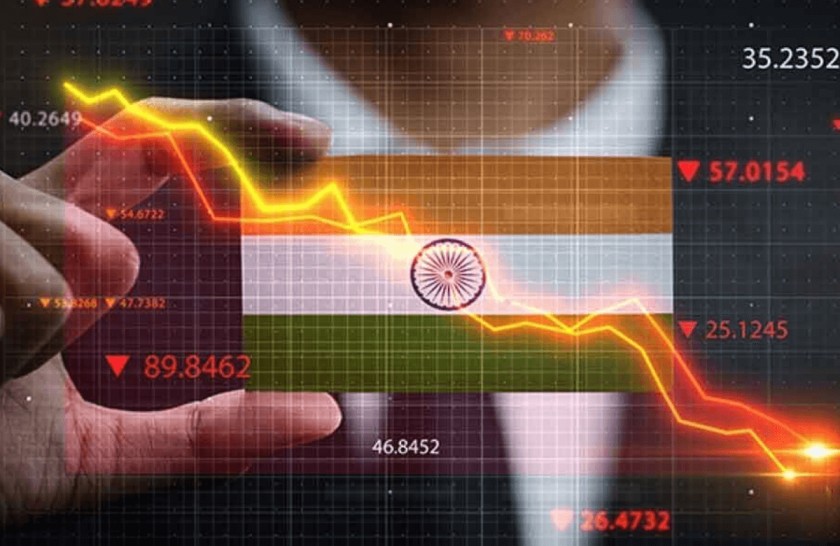- April 5, 2023
Analyzing key economic indicators leading up to India’s policy decision

Since the last policy meeting in February, there have been quite notable movements in several key economic indicators.
Growth prospects
India’s growth outlook for fiscal year 2024 appears to be dampened by factors such as rising borrowing costs and slower income growth. The World Bank has lowered its growth forecast for the country to 6.3% from 6.6%, while the Asian Development Bank predicts a more moderate growth rate of 6.4% due to tight monetary conditions and high oil prices.
India’s Economic Survey 2022-2023 forecasts a growth rate of 6-6.8% this fiscal year, which would be the slowest in three years if realized. The growth outlook is dependent on various factors, including the impact of rising borrowing costs and slower income growth on private consumption.
Additionally, India’s GDP growth rate for the October-December quarter slowed to 4.4% from 6.3% in the previous quarter and 13.5% in the first quarter of fiscal 2023, primarily due to the contraction in the manufacturing sector.
Inflationary pressure
Inflation readings and their trajectory will be crucial factors in the upcoming policy decision. Despite efforts to maintain a comfortable band, the print has consistently remained above the mandated tolerance ceiling. In February, it slowed marginally to 6.44% from 6.52% in January.
Despite the Reserve Bank of India’s (RBI) goal to keep inflation at 4% with a 2% tolerance band, food inflation came in at 5.95% in February, marking the 10th straight month of inflation above the central bank’s target. The RBI Governor had cautioned about core inflation’s stickiness, forecasting a 5.3% inflation rate for FY24 with Q1 at 5%, Q2 at 5.4%, Q3 at 5.4%, and Q4 at 5.6%.
Rupee movement
Rupee hits highest level since March 13 at 81.92 per dollar but had its biggest yearly slump since 2013 with 11.3% fall in 2022 due to dollar strengthening on Fed’s monetary policy. Reuters poll predicts further fall in coming months, but RBI has enough reserves to prevent excess volatility.
Forex reserve
India’s forex reserves surged to an eight-month high of $578.78 billion, with a rise of $5.98 billion as of March 24, 2023. The reserves had declined from about $633 billion due to RBI’s intervention to prevent a fall in the local currency and a rise in the cost of imported goods.
Trade deficit
India’s merchandise exports declined to $33.88 billion in February while imports dropped to $51.31 billion, resulting in a merchandise trade deficit of $17.43 billion. This deficit was lower than the expected $19 billion and the December figure of $23.8 billion. The Economic Survey predicts that India’s export growth will be flat this fiscal year if the global economy does not pick up, and notes that the country’s current account deficit narrowed to 2.2% of GDP in the quarter ending December.
Rate differential
The world’s major central banks are grappling with balancing growth and inflation, as the US Federal Reserve raises interest rates by 475 bps since May last year, and India’s RBI raised rates by 250 bps. The Fed’s recent policy statement no longer mentions the need for “ongoing increases” in rates. However, prior to RBI’s February review, the US monetary authority had suggested further interest-rate increases were forthcoming, but has now hinted at a pause amid recent financial market turbulence following the sudden failures of two US banks.
The interest rate gap between India and other countries is a significant factor influencing foreign capital inflows, and as the Fed raises rates, the Indian market becomes less appealing.
Global crude prices
The Indian basket of crude oil was at $85.14/bbl on April 4, significantly lower than the ten-year high of $121.28/bbl in June last year. The RBI may revise its oil price assumption from $100/bbl, following OPEC’s surprise output cut. Brent crude futures rose to over $84/bbl and WTI crude futures to $80/bbl, up from $81.39/bbl and $74.54/bbl, respectively, before the February policy review.
Banks’ credit disbursals
As the RBI aims to curb inflation, it also seeks to maintain economic growth. Bank credit disbursals are an important indicator of economic activity, and according to RBI data, credit growth rate in India increased by 156.7% YoY to Rs 133.07 lakh crore in the fortnight that ended on March 10. This is up from a growth rate of 16.7% to Rs 130.46 lakh crore in the fortnight ended on November 18, prior to the last policy meeting.
